Examples of Heterogenous Mixtures include mixed nuts, trail mixes containing dried fruit, nuts, seeds, and chocolate, chicken noodle soups, granola cereals, salsas, taco salads, ice cream sundaes, and frozen smoothies Maintain their physical characteristics.
- Examples of Heterogenous Mixtures
- 1: Muddy Water
- 2: Oil and Vinegar
- 3: Salsa
- 4: Chicken Noodle Soup
- 5: Ice Cream Sundae
- 6: Taco Salad
- 7: Frozen Berry Smoothie
- 8: Magnetic Mix
- 9: Chunky Soup
- 10: Berry Yogurt Parfait
- 11: Sand Art
- 12: Trail Mix
- 13: Backyard Compost
- 14: Granola Bar
- 15: Garden Salad
- 16: Cereal Snack Mix
- 17: Mixed Nuts
- 18: Burrito Bowl
- 19: Wendy’s Frosty
- 20: Fruit Salad
- 21: Succotash
- 22: Seafood Pasta Salad
- 23: Chili Cheese Dog
- 24: Fruit Skewers
Examples of Heterogenous Mixtures
Here are a few common Examples of Heterogenous Mixtures:
1: Muddy Water
Components: Sand and water
The sand and water mix to form a heterogeneous mixture because the sand particles do not dissolve into the water. Although combined, the sand and water retain their separate unique properties.
The sand sinks to the bottom while the water rests on top. When left undisturbed, visible layers form with the sand on the bottom and water on top.
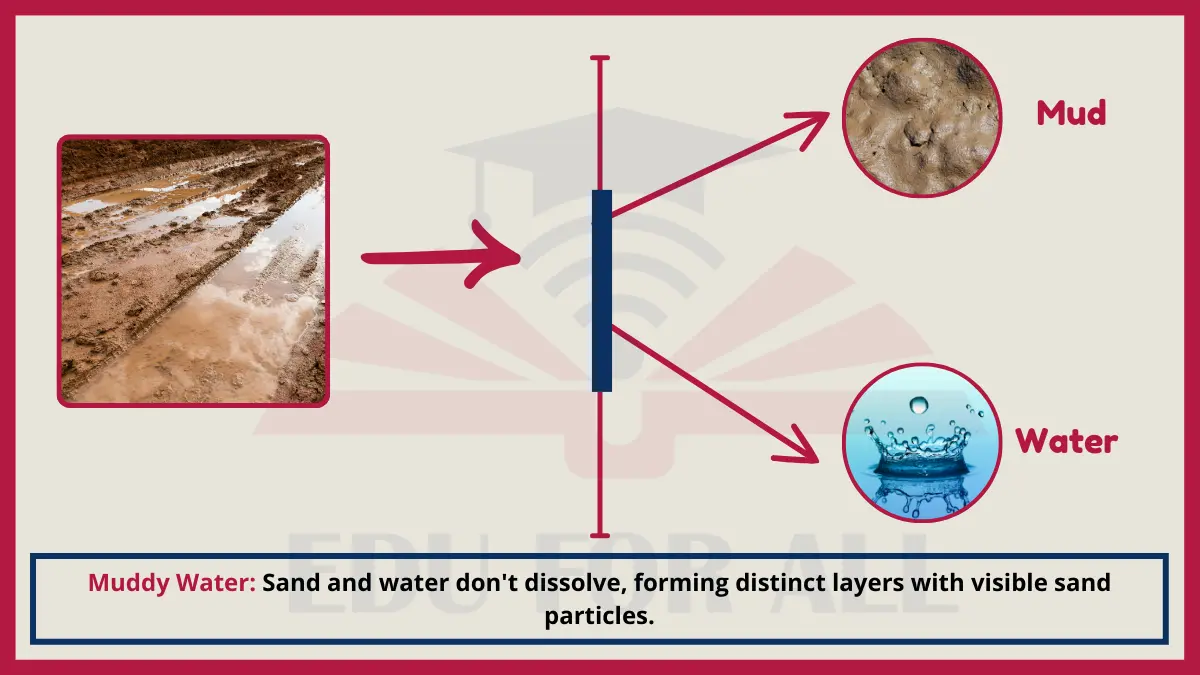
Experiment: Mix sand and water in a jar. Let it settle and observe the separation of the layers.
2: Oil and Vinegar
Components: Oil and vinegar
Oil and vinegar form a heterogeneous mixture because the liquids do not combine fully. The oil droplets spread throughout the vinegar but the two retain their separate properties and do not dissolve into each other. Over time, the oil will separate and rise to the top of the vinegar to recreate distinct visible layers of oil over vinegar.

Experiment: Mix oil and vinegar, shake well, allow to settle undisturbed and observe layers reforming.
3: Salsa
Components: Chopped tomatoes, onion, cilantro, lime juice
Though blended together, the tomato, onion, cilantro, and lime juice maintain physical integrity to add pops of flavor, aroma, and texture that speak to their individual identities within the dip.
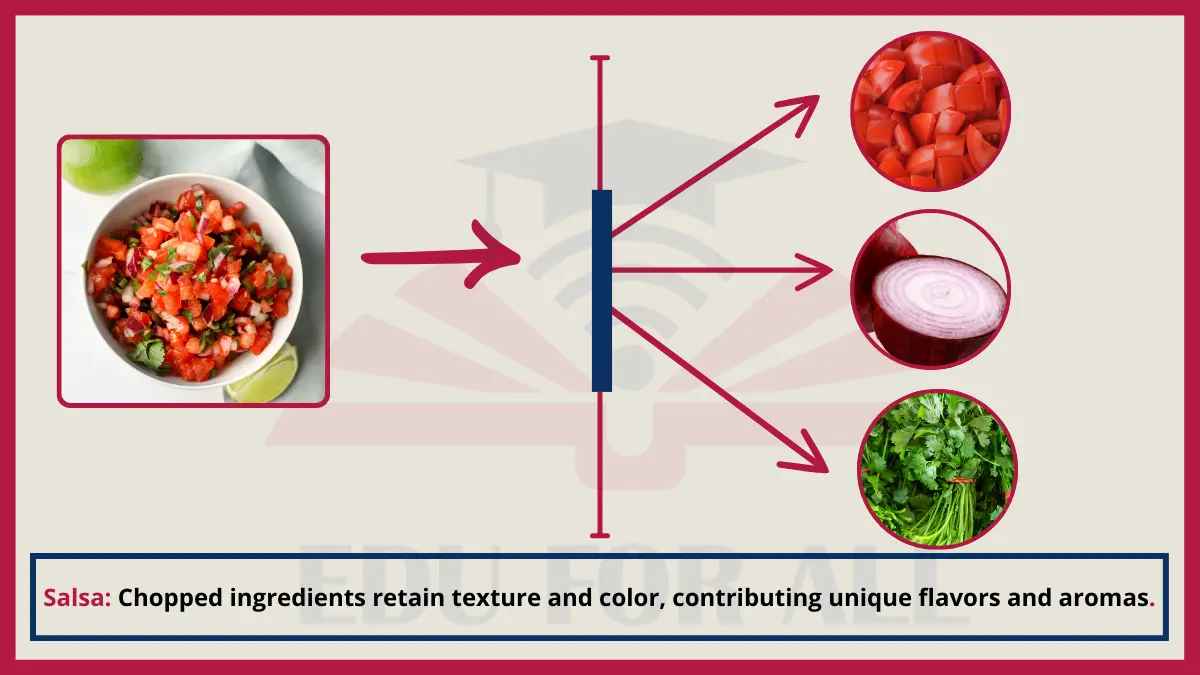
Experiment: Pick out visible salsa ingredients before tasting.
4: Chicken Noodle Soup
Components: Chicken, egg noodles, carrots, celery stalks
Cooking noodles in broth with carrot slices and chicken pieces makes soup with ingredients floating together but keeping own shapes.
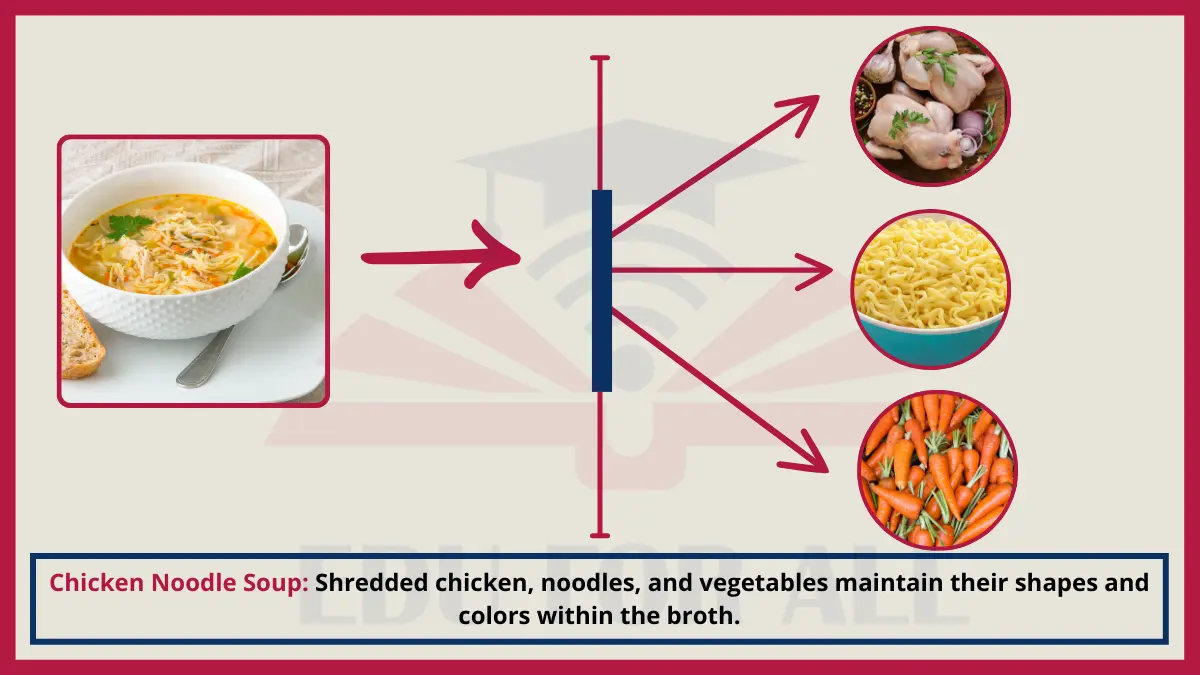
Experiment: Strain soup components before tasting each individually.
5: Ice Cream Sundae
Components: Vanilla ice cream, chocolate sauce, sprinkles, whipped cream
The ice cream, sauce, sprinkles, and whipped cream remain distinctly visible components retaining their innate properties to deliver an amalgam of flavors and textures with each spoonful.
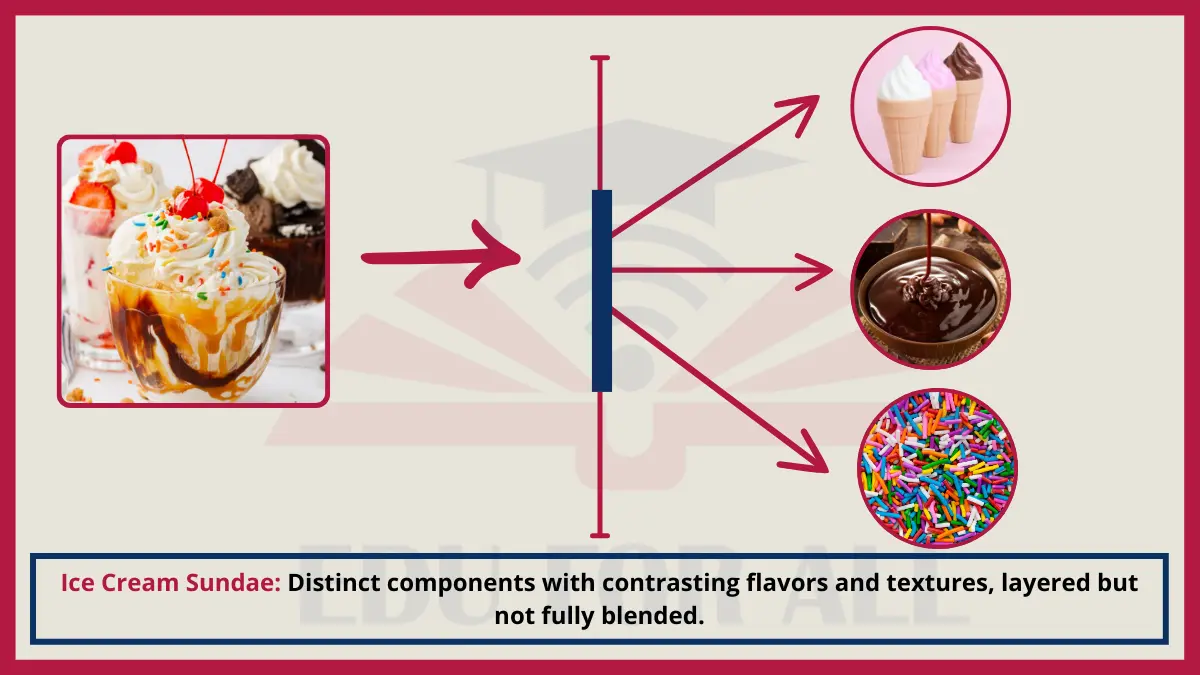
Experiment: Identify sundae ingredients before mixing and sampling.
6: Taco Salad
Components: Lettuce, tomato, cheese, beans, corn chips
The crisp lettuce forms the salad base holding a medley of textures and flavors comprised of diced tomato, shredded cheese, heated beans and crunchy corn chips that each maintain their distinct essences within the compilation of ingredients.
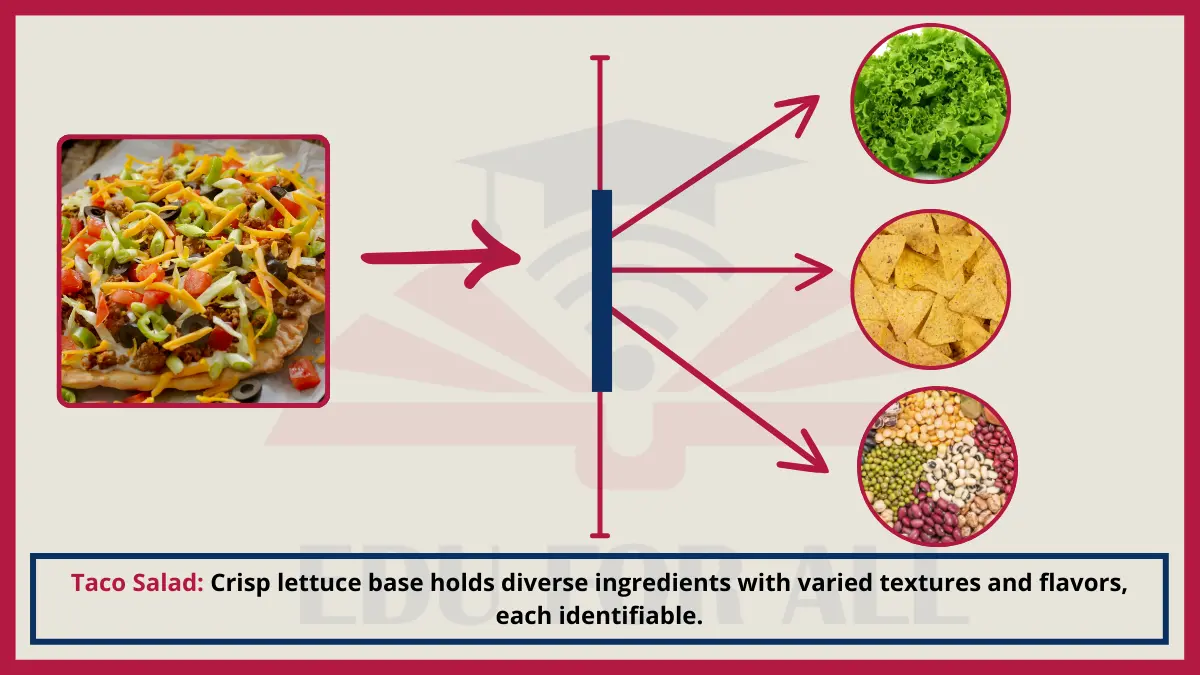
Experiment: Catalog observations regardingidentity retention of individual taco salad components before mixing and enjoying the dish.
7: Frozen Berry Smoothie
Components: Strawberries, blueberries, banana, yogurt
Blending releases and combines the ingredients’ flavors but the berry seeds and banana bits remain present in the frothy drink as testaments to origins. Sips speak of unified natural produce.
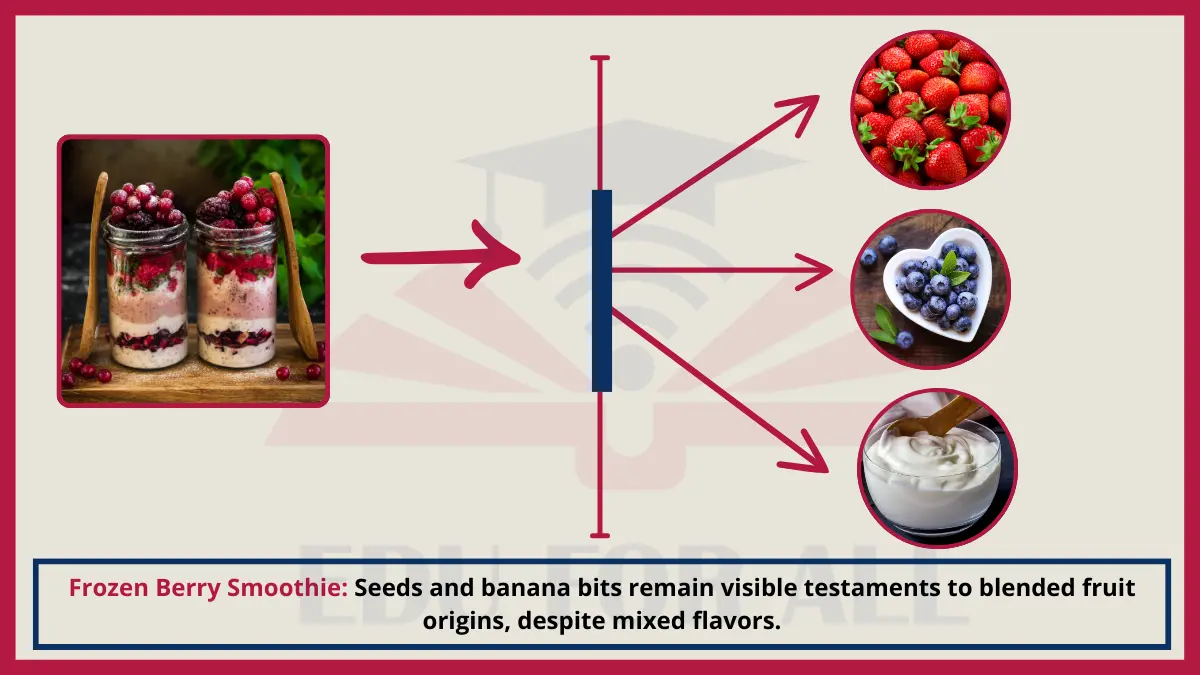
Experiment: Document smoothie ingredients for origins report.
8: Magnetic Mix
Components: Iron filings and sulfur
Iron filings and sulfur form a heterogeneous mixture because the solid particles integrate but maintain their individual properties. Upon mixing, the dark grey iron can be differentiated from the bright yellow sulfur by sight.
The iron remains attracted to magnets while the sulfur does not. Their different physical appearances and magnetic properties remain distinct within the combined mixture.
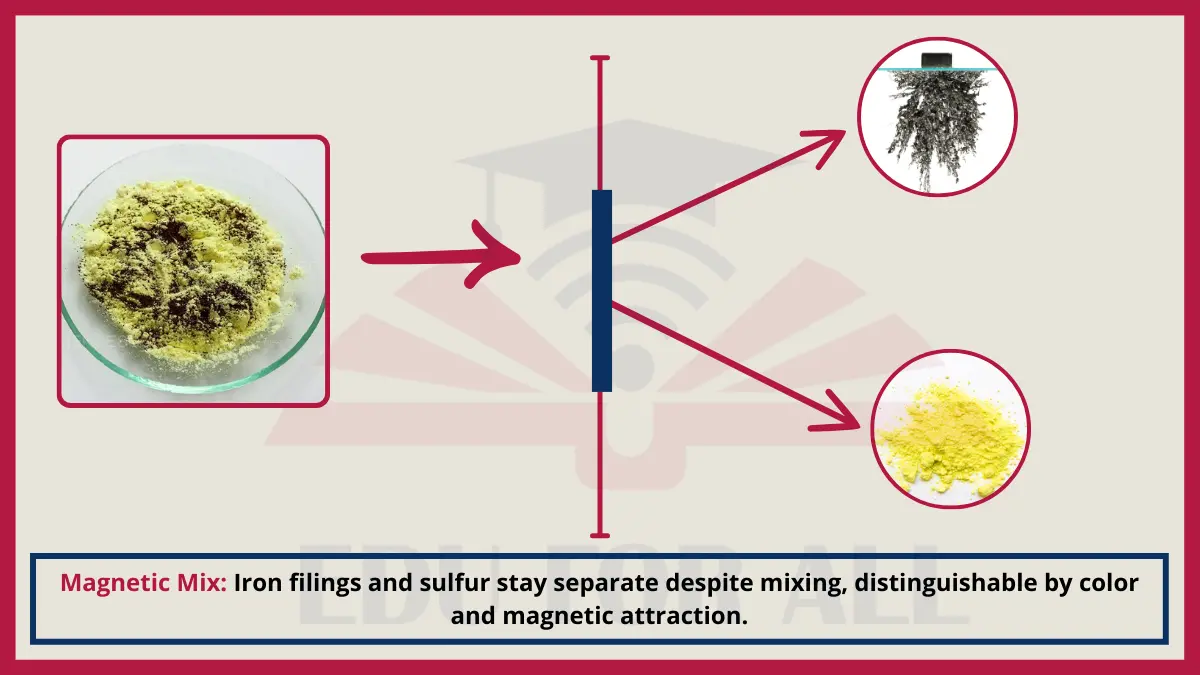
Experiment: Mix iron filings and sulfur in a jar. Use a magnet to try to separate out the responsive iron particles.
9: Chunky Soup
Components: Chicken broth and vegetables (carrots, peas, potatoes)
The broth and vegetables combine to make a heterogeneous mixture soup. Though immersed in the savory liquid broth, the carrot coins, pea spheres, and cubed potatoes maintain their sizes, shapes, textures and colors. Each component’s attributes remain unchanged.
Later, eating the soup, one tastes the flavors of the distinct vegetables suspended throughout each spoonful.
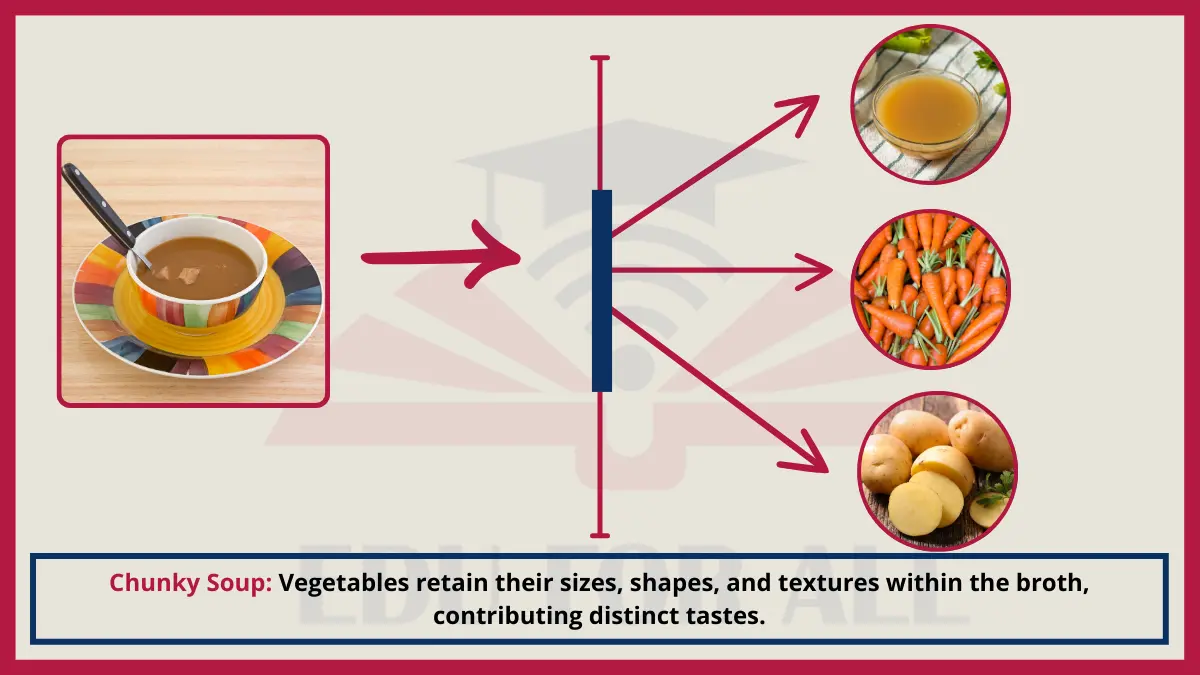
Experiment: Make a soup with broth and vegetables. Filter soup solids from broth after cooking and observe pieces captured.
10: Berry Yogurt Parfait
Components: Vanilla yogurt, blueberries, sliced strawberries and granola
Combining the creamy vanilla yogurt with the various fruits and crunchy granola creates several distinct textures and appearances. The bright red strawberry slices contrast against the dull blue blueberries alongside beige yogurt and brown granola chunks.
Each addition maintains innate qualities while contributing to an amalgam of flavors and varied bites. Mixing does not mask individual natures of the heterogeneous parts.
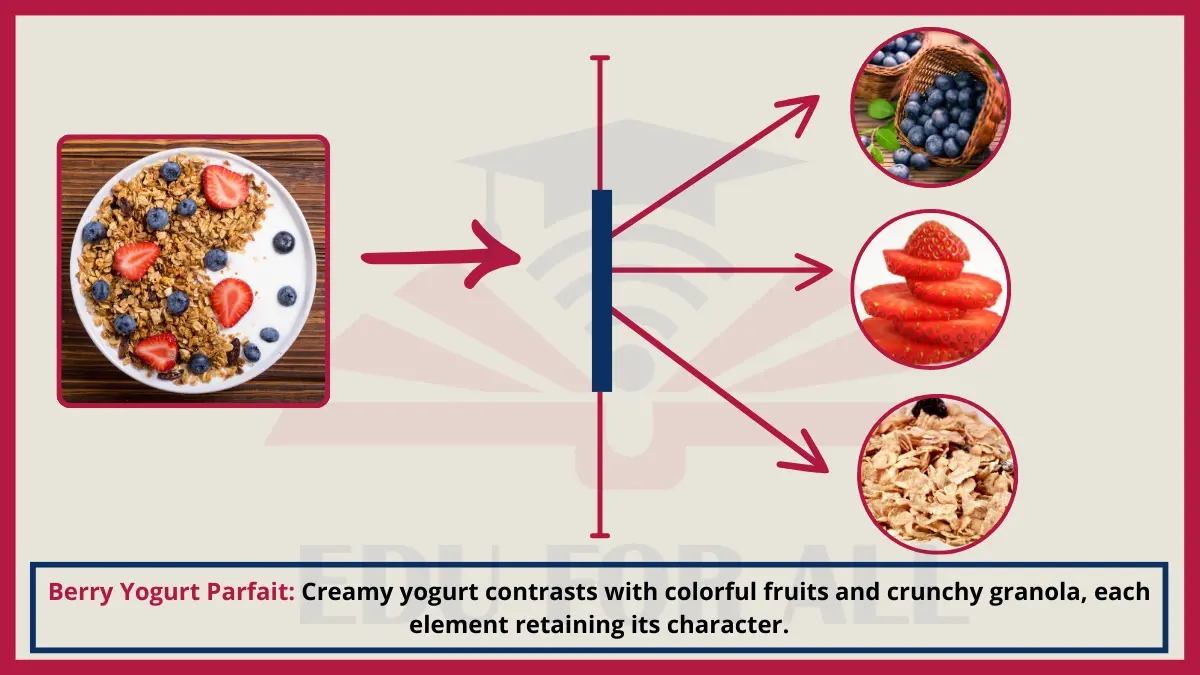
Experiment: Create a yogurt parfait and observe the separate components using a magnifying glass.
11: Sand Art
Components: Colored sands – red, yellow, green, blue
Even though the sands are mixed together, each color stays separate, like little mountains with their own special shade. The blue sand still looks blue next to the red, yellow, and green piles, just like desert dunes keep their separate shapes in the sunshine.
The bright colors make them look like different hills, telling everyone they’re still their own kind of sand.
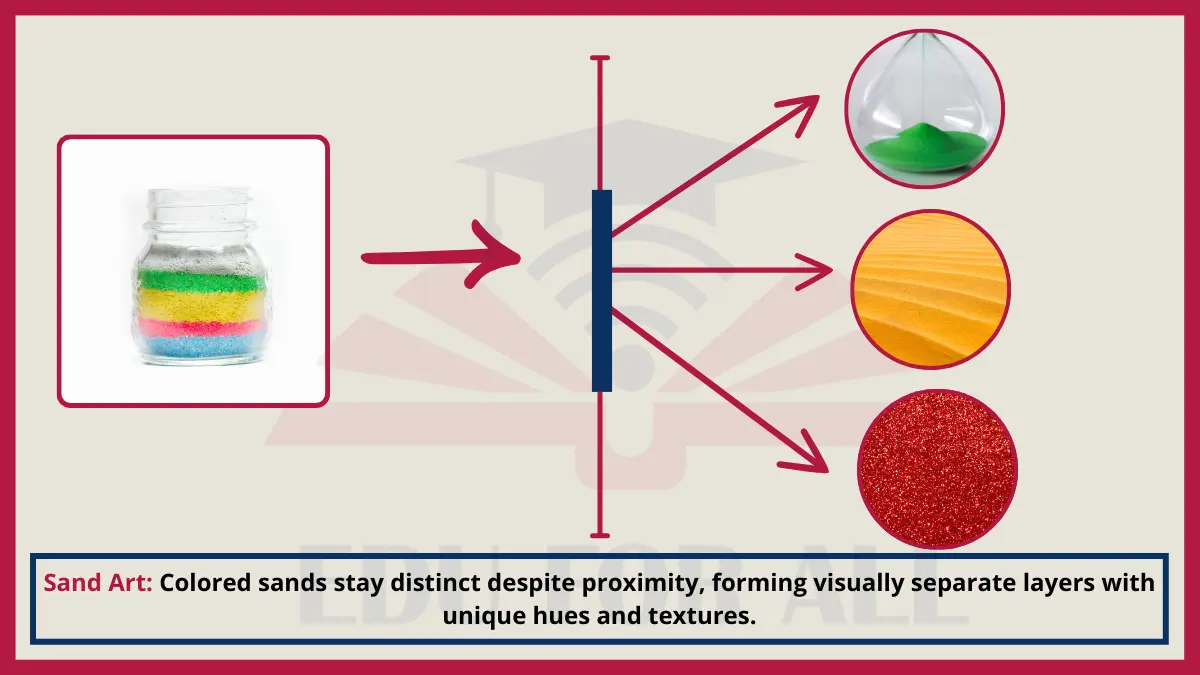
Experiment: Layer colored sands in jar – observe hues and textures.
12: Trail Mix
Components: Peanuts, raisins, chocolate chips
Though combined in the same snack mix, the peanuts, raisins and chocolate chips remain identifiable by their distinct attributes of appearance, flavor and texture. The chocolate’s smooth sweetness contrasts the peanuts’ crunchy saltiness while the raisins chewy flavor differs again from the others.
Each component interacts by proximity while expressing innate qualities that allow it to remain distinguished within the heterogeneity of ingredients blended together into one trail mix.
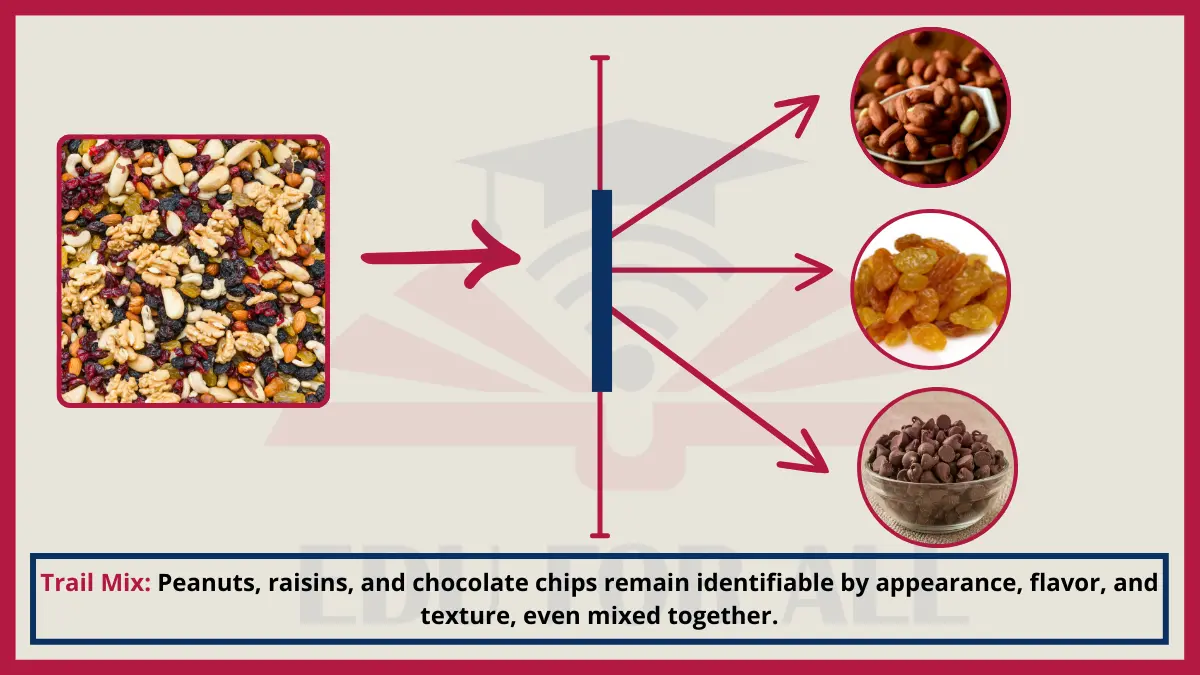
Experiment: Examine and classify trail mix components by attributes.
13: Backyard Compost
Components: Food scraps, grass clippings, leaves, twigs
The different organic materials integrated into the backyard compost pile each contribute to the nutrient density and fuel decomposition while retaining their initial forms. Scraps of fruit and vegetables can be spotted amid grass blades and twig pieces.
Leaves neighbor coffee grounds but maintain darker shades of green and brown. The components lend their biomass to shelter organisms aiding decay but remain visible as distinct ingredients.
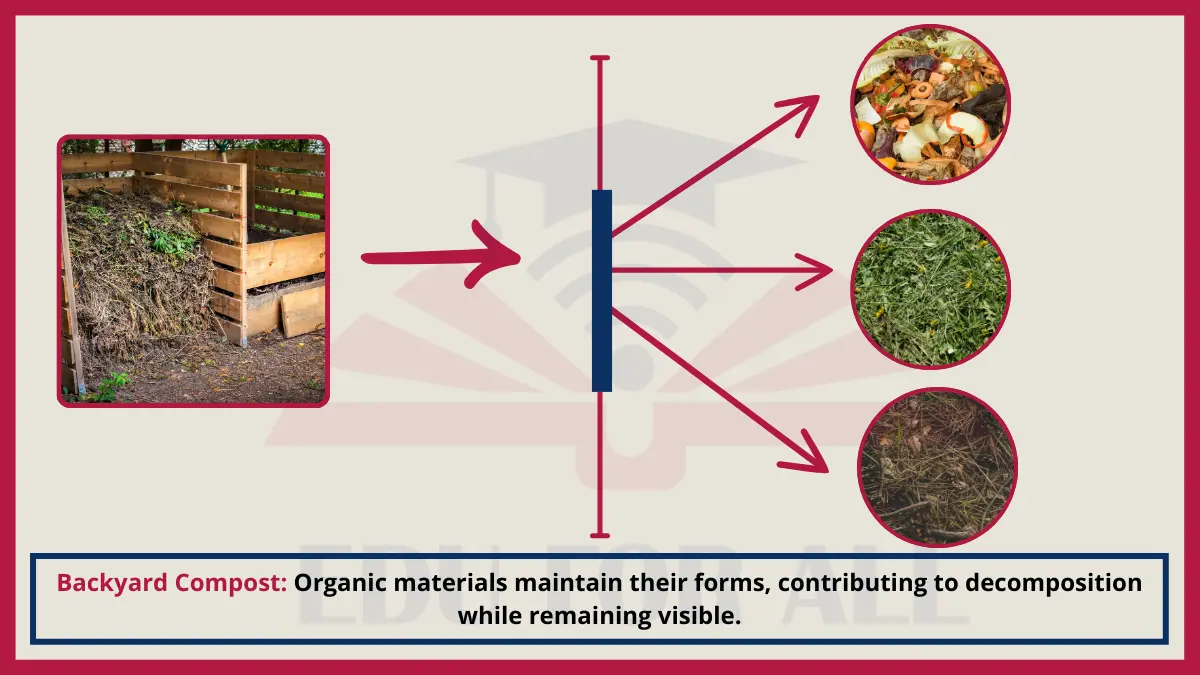
Experiment: Examine compost under a magnifying glass, recording observations of distinct components.
14: Granola Bar
Components: Oats, nuts, dried fruit, honey, brown sugar
The chewy granola bar holds a mix of ingredients that maintain innate physical and flavor identities beyond binding together through baking. The modest sweetness cannot mask roasted pecan and walnut pieces which provide crunch alongside rolled oats.
Their varied textures contrast raisins’ softness while carrying distinct flavors forward into each mouthful. The heterogeneous parts complement as a whole.
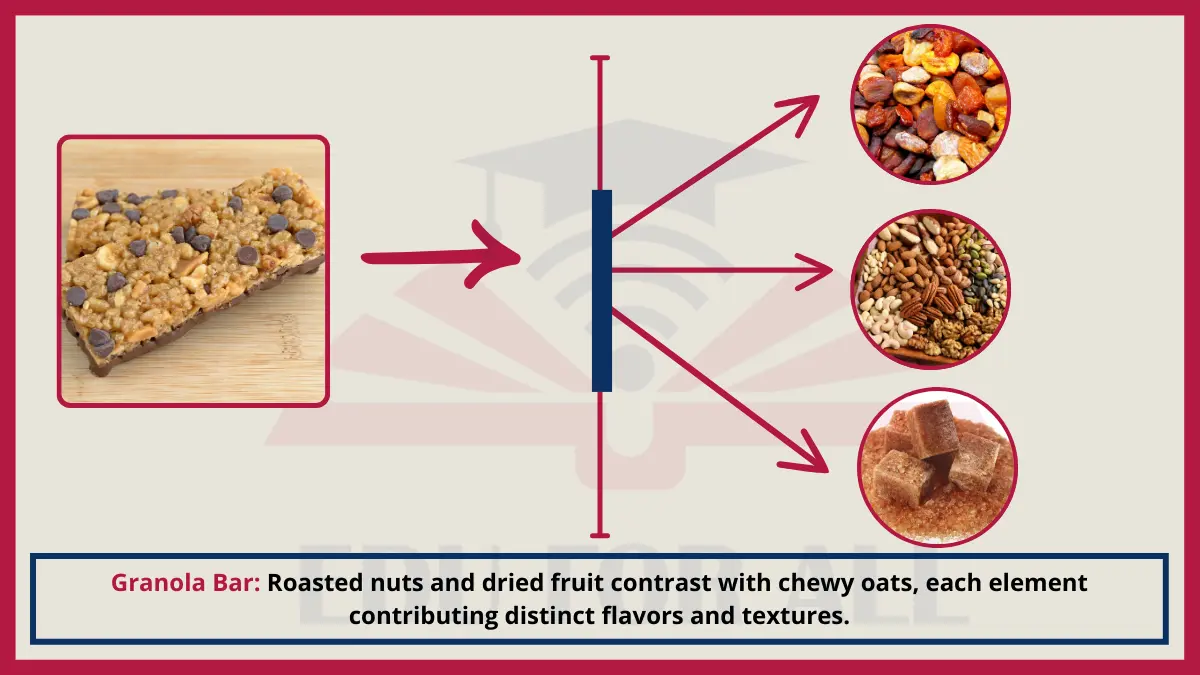
Experiment: Sketch magnified images of a granola bar cross section, labeling visible components.
15: Garden Salad
Components: Lettuce, carrots, tomatoes, cucumbers, dressing
In unison on the plate, the sliced vegetables provide an array of flavors, colors and textures alongside crisp lettuce leaves. Carrot coins contrast cucumber slices with brighter pigments against muted green hues.
Tomato wedges provide bursts of seed laden juice alongside the cool crunch of largely water filled cucumbers. Each component speaks through distinct qualities unhindered by proximity upon the piled bed of greens.
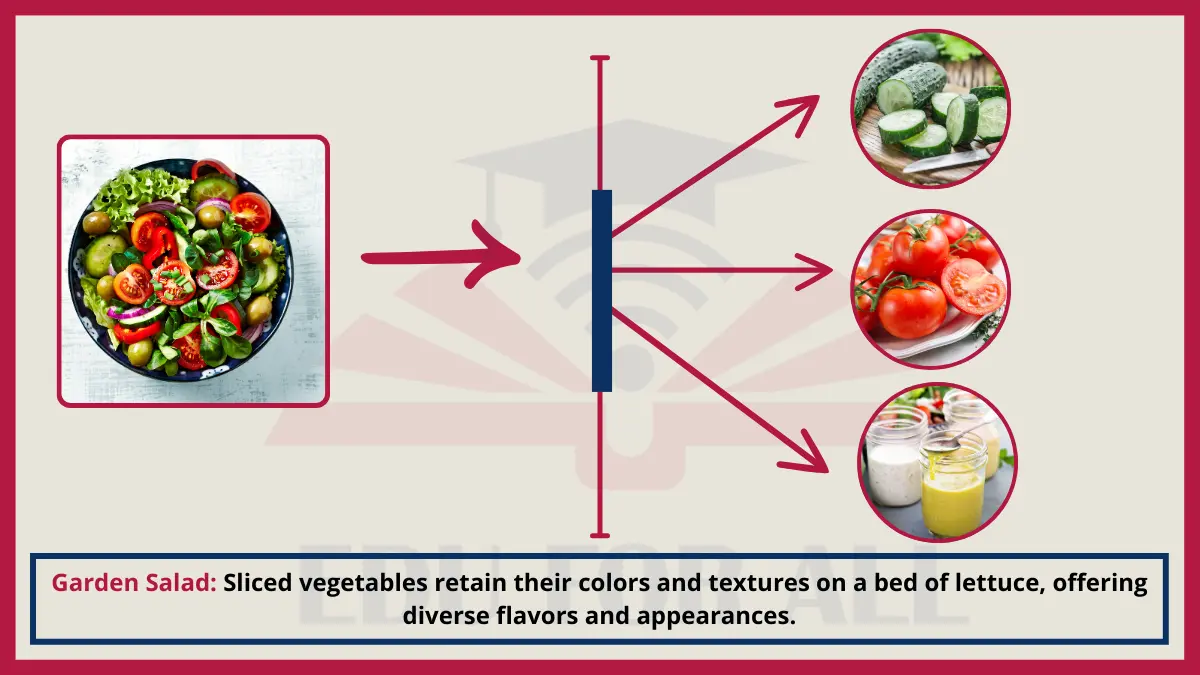
Experiment: Examine salad ingredients under magnifying glass before tossing salad, recording observations.
16: Cereal Snack Mix
Components: Frosted cereal pieces, pretzel sticks, crackers
Pouring the tri colored cereal pieces together with tubular pretzels and square crackers yields a medley of differently shaped items. The crisp crackers hardened during baking next to extruded starchy cereal bits and boiled then baked alkaline tasting pretzels.
Though now combined in a single snack mix, their varied origins revealed through divergent textures and flavors.
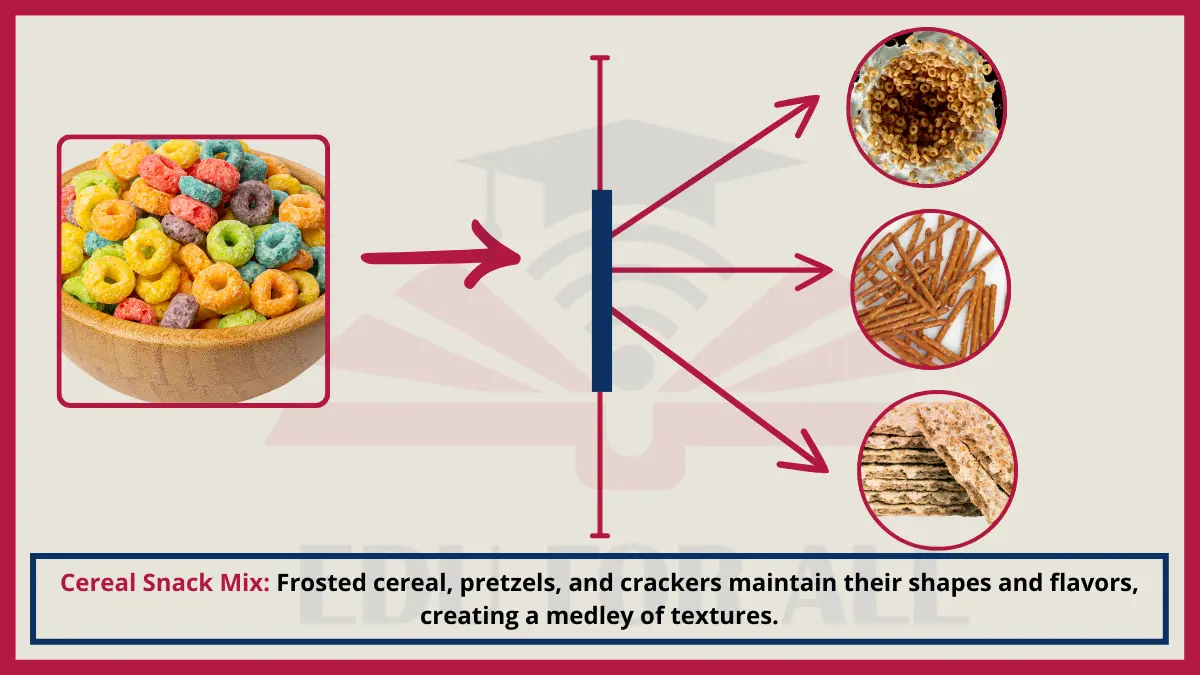
Experiment: Sort and classify cereal mix components by shape and taste
17: Mixed Nuts
Components: Peanuts, cashews, pistachios, hazelnuts, brazil nuts
Although mixed together in a bowl, the assortment of nuts represent several botanical families, evident through their varied shapes, sizes and flavors. Oval peanuts with papery skins neighbor small, teardrop shaped pistachios next to acorn-like caps of hazelnuts and large, irregular brazil nuts. Commingled but distinct identities intact.
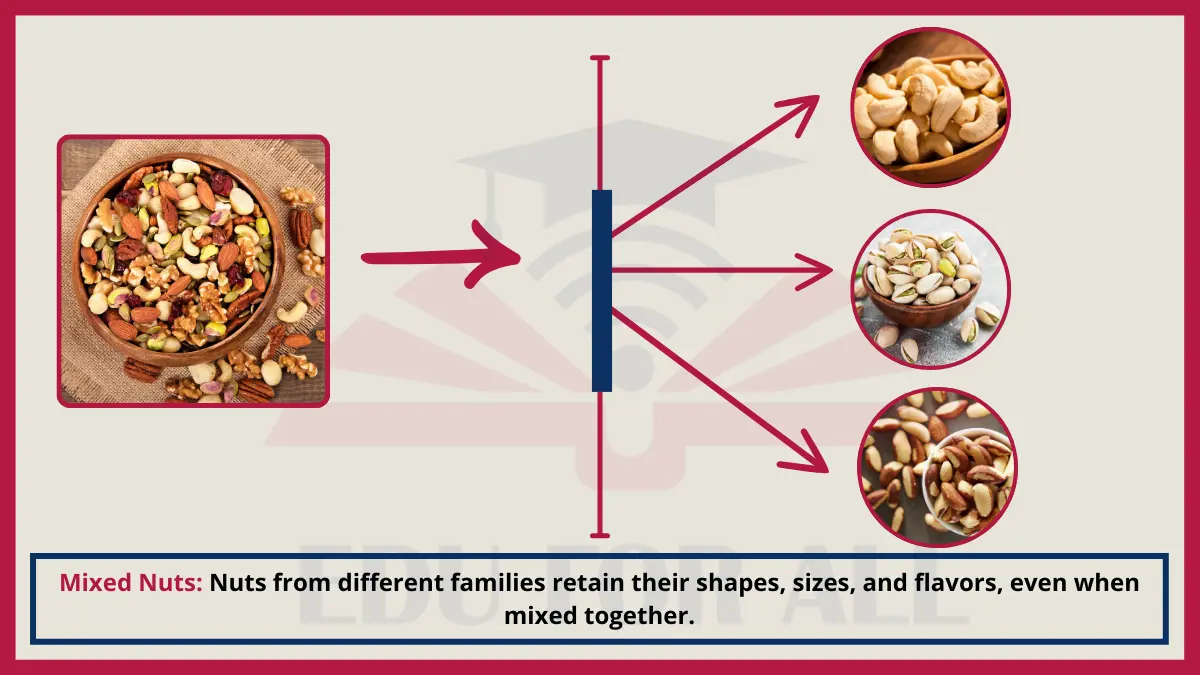
Experiment: Research and present information on various nut’s origins and properties.
18: Burrito Bowl
Components: Rice, pinto beans, tomatoes, corn, chicken, cheese, lettuce
Within the burrito bowl, the diverse ingredients mingle while maintaining innate textures and appearances. Grains of rice pilaf absorb flavor from broth, pairing with rich beans and corn. Tomato dices add color and versitality alongside shredded lettuce. The dish’s components harmonize while celebrating individual identities.
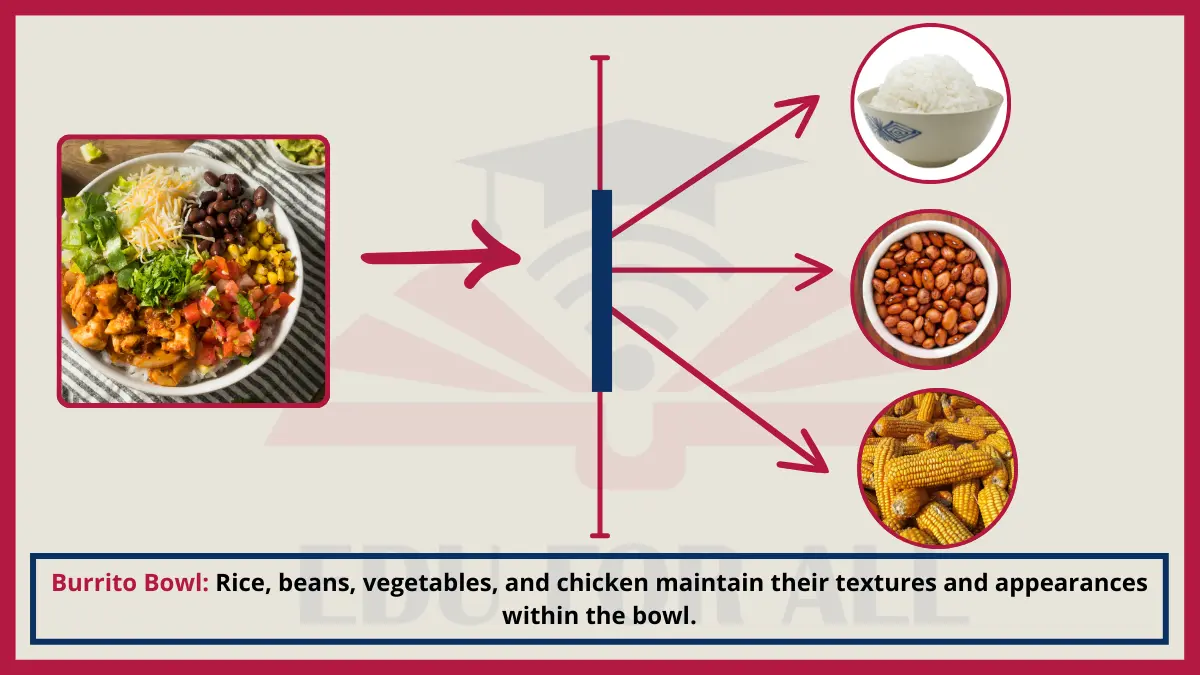
Experiment: Dissect burrito bowl contents analyzing components before mixing and tasting.
19: Wendy’s Frosty
Components: Milk chocolate frosting, vanilla soft serve
Though whipped together into a frozen dessert, the milk chocolate frosting and vanilla soft serve maintain their distinct flavors and textures, evidenced by streaks of brown amid white. Sugary sweet soft serve teams up with deeper, extra creamy chocolate frosting to create an intriguing swirled ice cream experience.
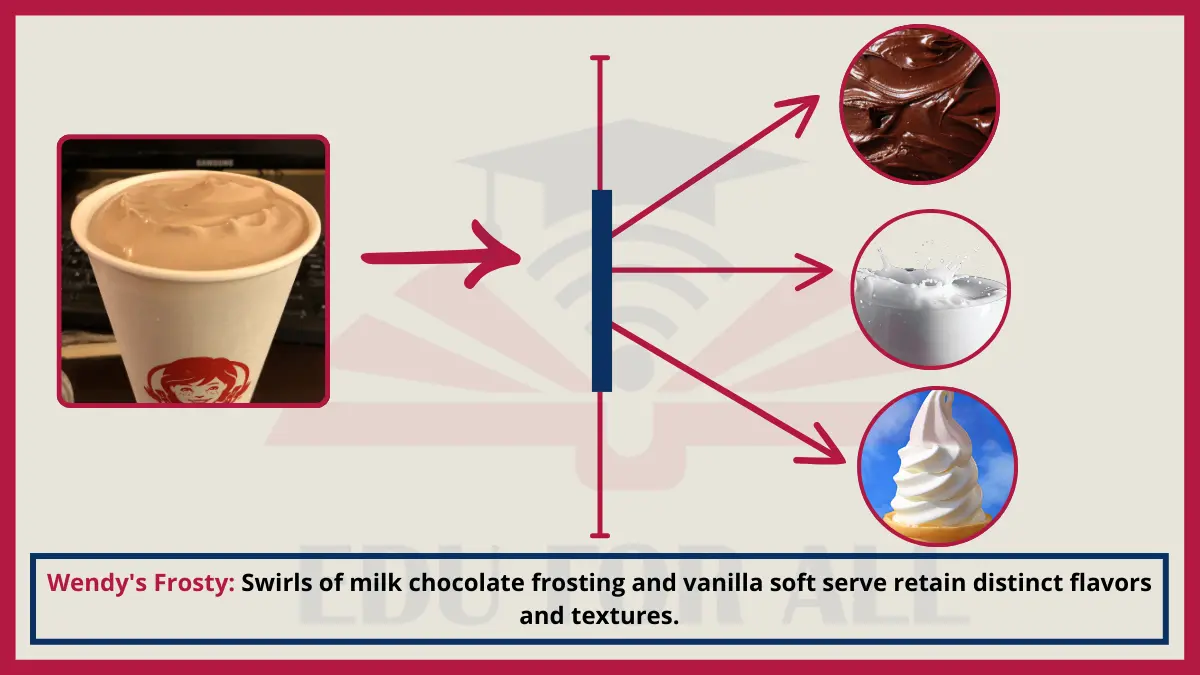
Experiment: Observe melted Frosty in bowl to see separated components.
20: Fruit Salad
Components: Watermelon, grapes, oranges, apples
The colorful medley of fruit chunks mingle within the serving bowl while maintaining original properties that speak to diverse plant parentage. Juicy watermelon bits retain a red tint alongside golden grapes and orange citrus slices. Green apple cubes contribute tartness to balance the fruit salad’s sweetness in an exemplification of harmonic contrast.
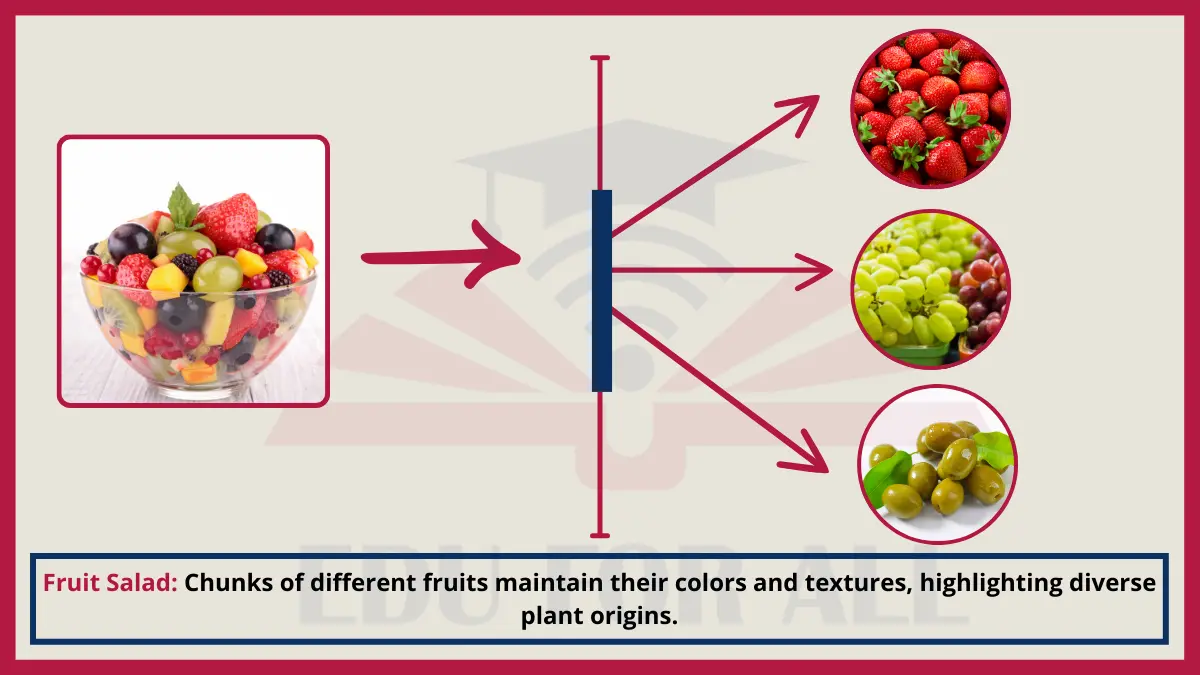
Experiment: Juice combinations of fruit salad ingredients to compare properties.
21: Succotash
Components: Corn, lima beans, garlic, tomato, onion, basil
This mixture of vegetables and seasonings allows ingredients to adopt neighboring flavors while upholding innate identities. Sweet corn and grainy lima beans associate amid concatenations of produce from bulbous onion to rich tomato. Following unification amid heat and spice, components tell tastebud tingling tales of distinct origins upon the tongue.
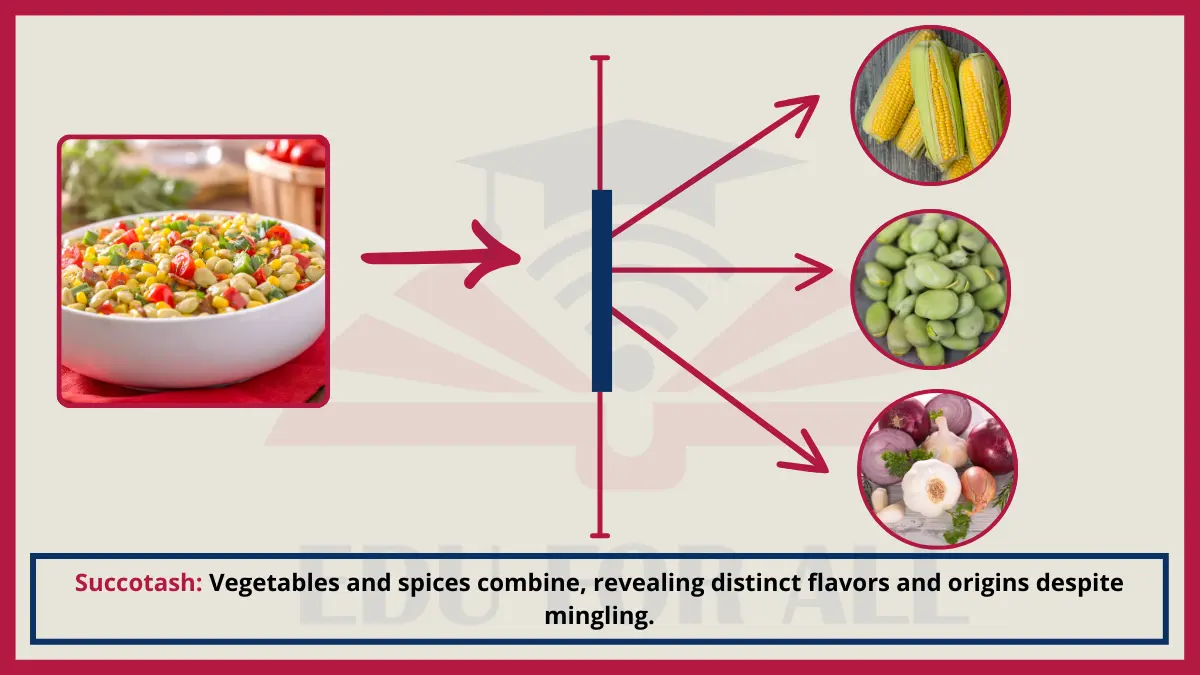
Experiment: Identify succotash ingredients using a microscope and taxonomy resources before tasting.
22: Seafood Pasta Salad
Components: Spiral pasta, surimi imitation crab meat, shrimp
The hapazard assortment of marine and manufactured morsels make for tasty dish where ingredients hold shape and flavor within unified composition. White pasta spirals tangle with pinkish surimi and curled shrimp displaying colors and textures with origins linked to their once separate natures now joined together.
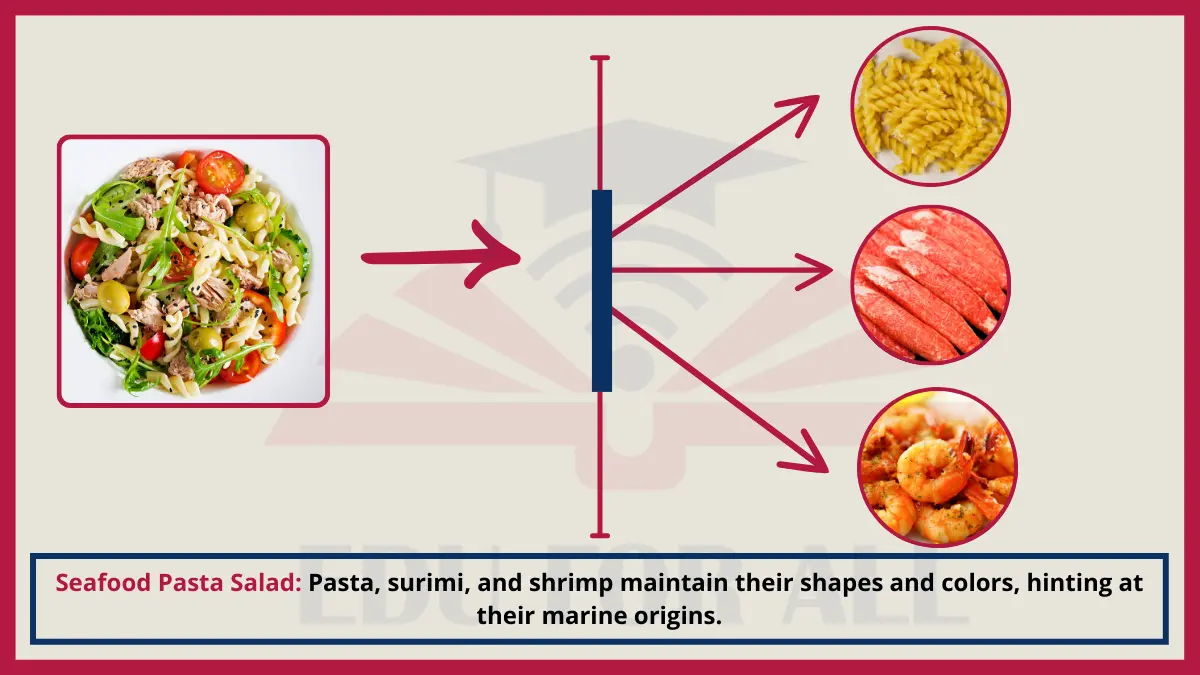
Experiment: Sketch seafood pasta salad profiling pieces prior to mixing based on visible traits.
23: Chili Cheese Dog
Components: Frankfurter, bun, ground beef, tomatoes, onion, cheese
The pureed chili and shredded cheddar do little to deter the hot dog and bun constituents from exhibiting inherent qualities within the decadent dish. Sodium laced meat and spongy bread encasements harbor hints of their manufacturing pasts amid condiment coated union while contributing to the flamboyant flavor profile.
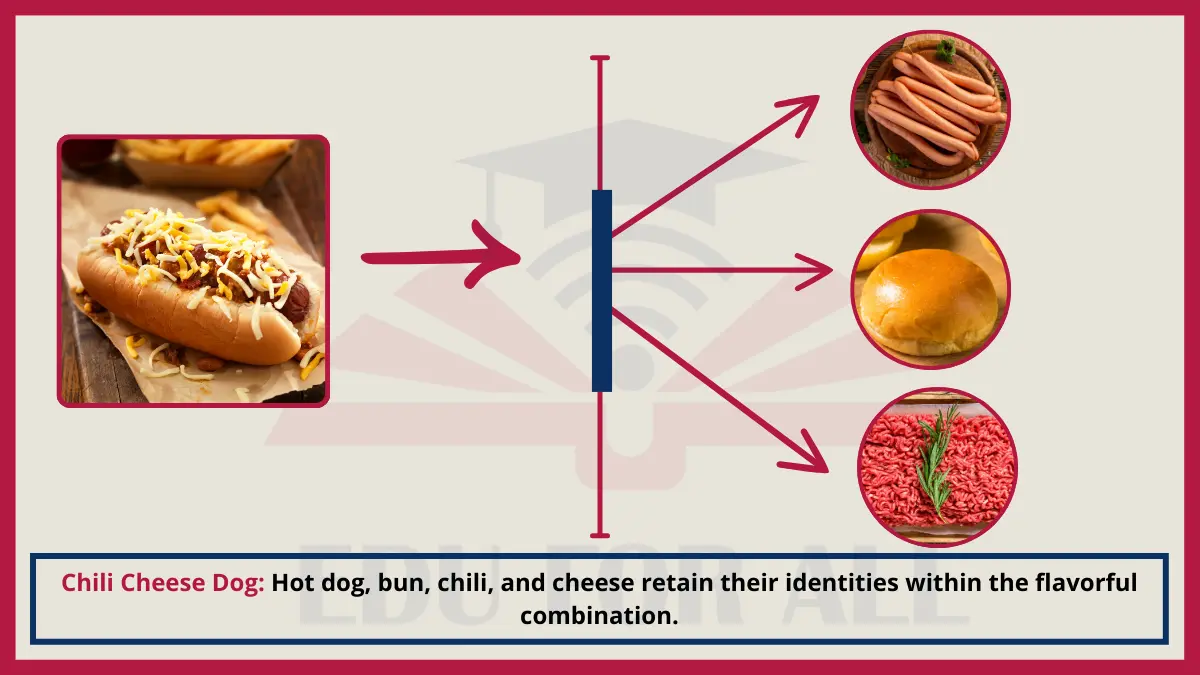
Experiment: Dissect and diagram components of chili cheese dog before savoring the savory creation by tasting individually first.
24: Fruit Skewers
Components: Strawberries, pineapple, grapes, melon balls
Though lined up together on wooden skewers, the colorful arrangement of fruits maintain visibly distinct shapes and colors indicating origins. Juicy red strawberries combine with golden pineapple cubes, green melon spheres and oval grapes while upholding individual essences that speak to once separate stock all aligned to please the palette through contrasting sweetness.

Experiment: Research and present origins and botanical classifications of fruit skewer components.

